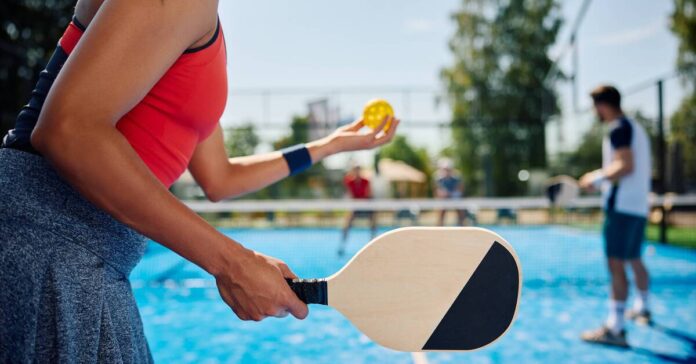Pickleball, a fast-paced and engaging sport, has gained immense popularity in recent years. It’s a fun way to stay active, socialize and enjoy friendly competition.
However as with any physical activity pickleball carries with it the risk of various injuries. To minimize the risk of such injuries and maintain optimal performance it is crucial to incorporate effective stretching techniques into your pre-game and post-game routines.
In this article we’ll explore the importance of stretching and provide you with a comprehensive guide to preventing common pickleball injuries using CastleFlexx stretching equipment. Better now than when you’re injured!
Understanding Common Pickleball Injuries
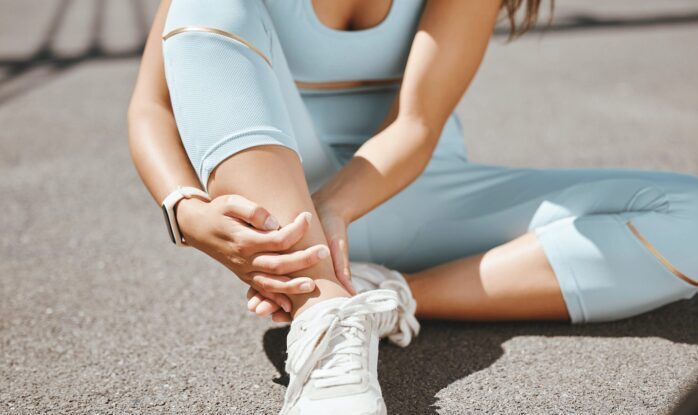
Before delving into stretching techniques, it’s essential to understand the most common injuries associated with pickleball. These include:
- Ankle sprains: These can be caused by quick lateral movements and sudden changes in direction.
- Knee injuries: Pickleball involves repetitive stopping, starting and pivoting, which can strain the knees.
- Shoulder injuries: Overhead shots and repetitive arm motions can cause shoulder pain and rotator cuff injuries.
- Wrist and elbow injuries: The repeated impact of hitting the ball can result in wrist strains and elbow tendonitis, commonly known as “tennis elbow.”
- Lower back pain: The twisting motions and quick reactions required in pickleball can strain the lower back muscles.
By recognizing these common injuries you can tailor your stretching routine to target the specific muscle groups involved and reduce your risk of injury.
The Importance of Stretching
Stretching is a vital component of any pickleball player’s fitness regimen. Incorporating regular stretching into your routine offers several key benefits:
- Improved flexibility: Stretching helps improve your overall flexibility, enabling a greater range of motion and reducing risk of muscle strains and tears.
- Enhanced performance: Flexible muscles are more efficient and can generate more power, leading to better performance on the pickleball court.
- Injury prevention: By keeping your muscles and joints supple you can minimize the likelihood of overuse injuries and sprains.
- Faster recovery: Stretching after a game or practice session promotes blood flow to the muscles, aiding in the removal of lactic acid and reducing post-exercise soreness.
Having established the importance of stretching we can explore some effective techniques, which can be fully exploited with CastleFlexx stretching equipment.
Pre-Game Stretching Routine
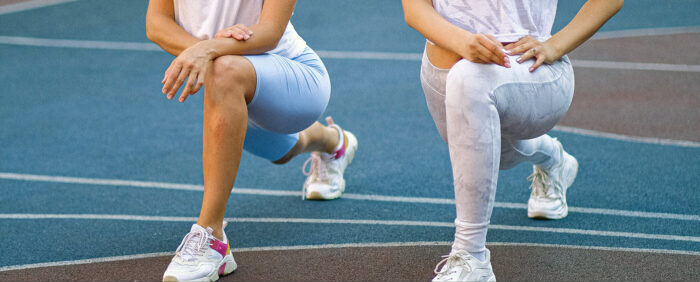
Before stepping onto the pickleball court it’s crucial to warm up your muscles and prepare your body for the demands of the game. A pre-game stretching routine should focus on dynamic stretches which mimic the movements you’ll perform during play.
Here are some key stretches to include:
- Leg swings: Use the CastleFlexx resistance bands to perform lateral leg swings to warm up your hip flexors, glutes and thighs. Stand sideways and loop the band around your ankle, holding onto a stable surface for balance. Swing your leg forward and back, maintaining a straight leg throughout the movement.
- Arm circles: Engage your shoulder muscles with arm circles. Hold the CastleFlexx resistance bands in each hand and perform forward and backward arm circles, gradually increasing the size of the circles.
- Torso twists: Develop rotational flexibility in your core and lower back with torso twists. Stand with your feet shoulder-width apart, holding the CastleFlexx resistance band in front of your chest. Slowly twist your torso to the left and right, maintaining a stable lower body.
- Walking lunges: Improve hip and leg flexibility with walking lunges. Step forward with one leg, lowering your hips until both knees are bent at 90-degree angles. Push back to the starting position and repeat with the opposite leg, moving forward with each lunge.
Perform each stretch for 30 seconds to 1 minute, focusing on maintaining proper form and breathing deeply throughout the movements.
Post-Game Stretching Routine
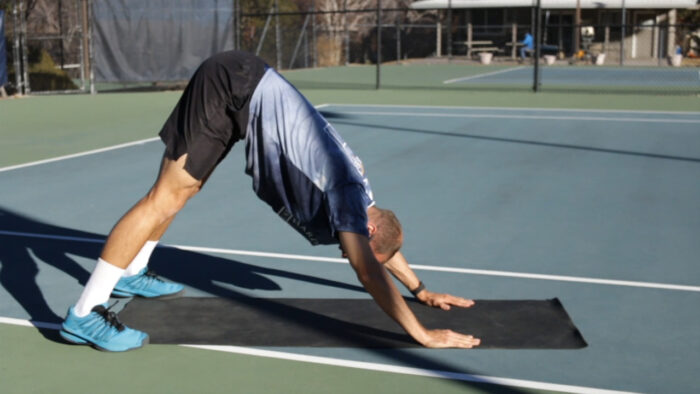
After an intense pickleball session your muscles are warm and pliable, making it the perfect time for a post-game stretching routine. Static stretches, where you hold a position for an extended period, are most effective at this stage.
Use your CastleFlexx stretching equipment to target the following muscle groups:
- Hamstrings: Sit on the ground with your legs extended in front of you. Loop the CastleFlexx resistance band around the balls of your feet and gently pull your torso forward, keeping your back straight. Hold the stretch for 30 seconds, feeling the tension in your hamstrings.
- Quadriceps: Stand on one leg and use the CastleFlexx resistance band to pull your opposite foot towards your buttocks. Keep your knees close together and your back straight. Hold the stretch for 30 seconds before switching legs.
- Shoulders: Hold one end of the CastleFlexx resistance band in your right hand and reach it behind your back. Grab the other end with your left hand, pulling it gently to deepen the stretch. Hold for 30 seconds, then switch arms.
- Hip flexors: Kneel on one knee, with your rear foot positioned against a wall or stable surface. Loop the CastleFlexx resistance band around your front foot and gently push your hips forward, feeling the stretch in your hip flexors and quadriceps. Hold for 30 seconds, then switch legs.
- Calves: Step one foot forward and loop the CastleFlexx resistance band around the ball of your back foot. Lean forward, keeping your back leg straight, and feel the stretch in your calf muscle. Hold for 30 seconds before switching legs.
Remember to hold each stretch for 30 seconds, breathing deeply and avoiding any bouncing or jerking movements.
Additional Tips for Injury Prevention
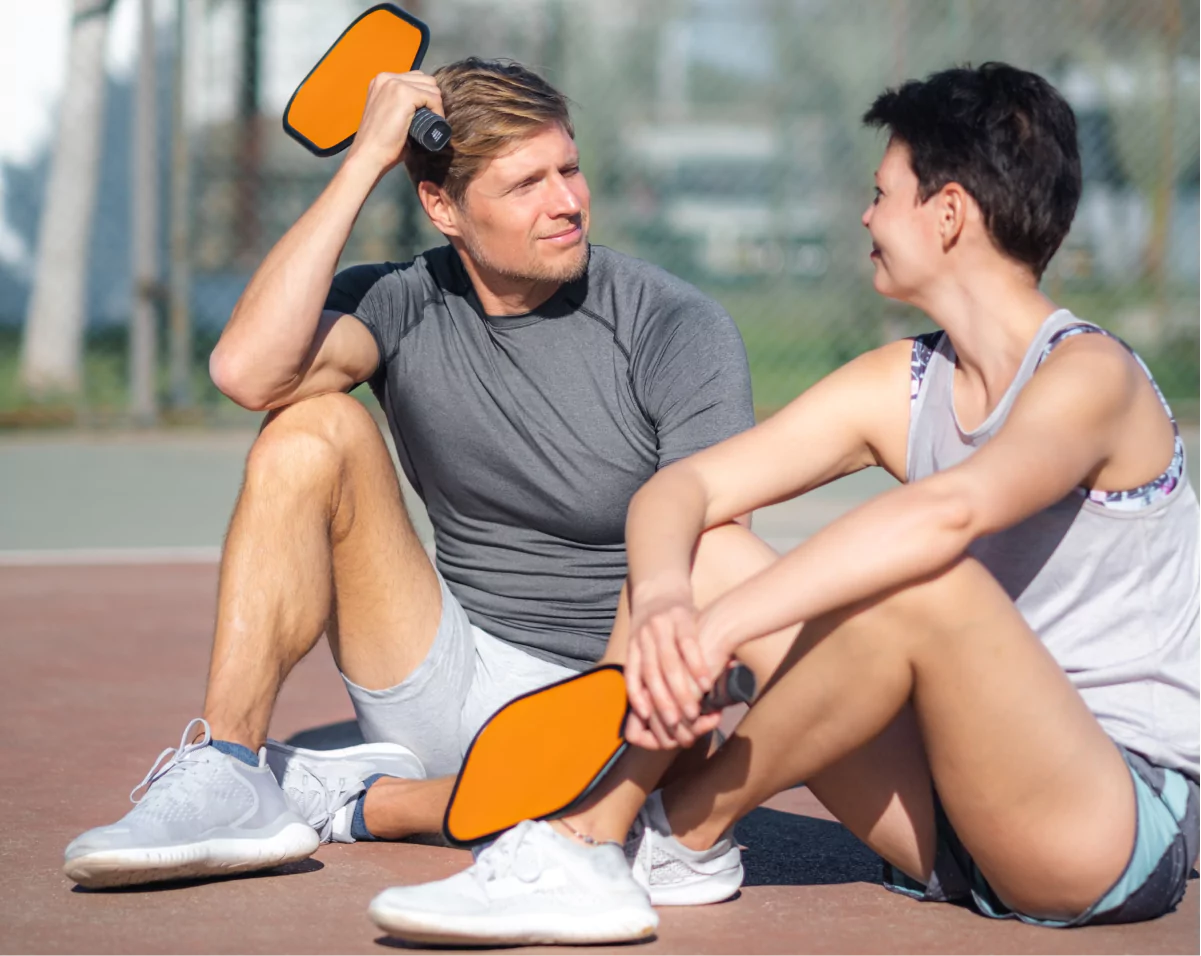
In addition to a consistent stretching routine there are several other steps you can take to prevent pickleball injuries. These include:
- Wear appropriate footwear: Choose shoes with good lateral support and cushioning to reduce the impact on your joints.
- Use proper technique: Focus on maintaining proper form when hitting the ball to minimize strain on your muscles and joints.
- Stay hydrated: Drink plenty of water before, during and after playing to avoid dehydration and muscle cramps.
- Listen to your body: If you experience pain or discomfort, take a break and reassess your technique or seek medical advice if necessary.
Conclusion
Pickleball is an exciting and rewarding sport which offers numerous physical and social benefits. However to fully enjoy the game and minimize the risk of injury it’s essential to prioritize stretching as part of your regular routine.
By incorporating CastleFlexx stretching equipment into your training program, and following the pre-game and post-game stretching techniques outlined in this article, you can improve your flexibility, enhance your performance and prevent common pickleball injuries. Listen to your body, use proper technique and stay hydrated to ensure a safe and enjoyable pickleball experience.
Using these strategies you’ll be well-equipped to take your pickleball game to the next level while maintaining optimal physical health and well-being. If you need to gain that extra inch, here is how.

